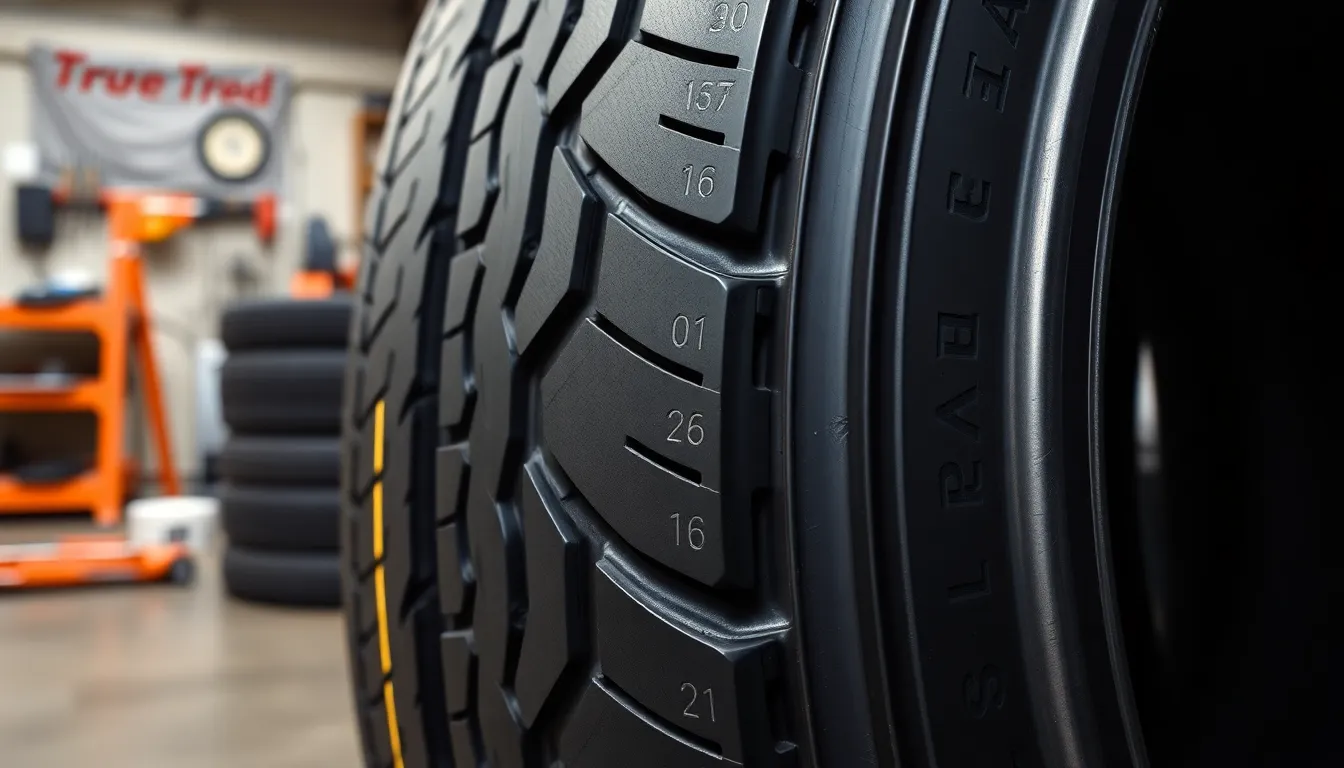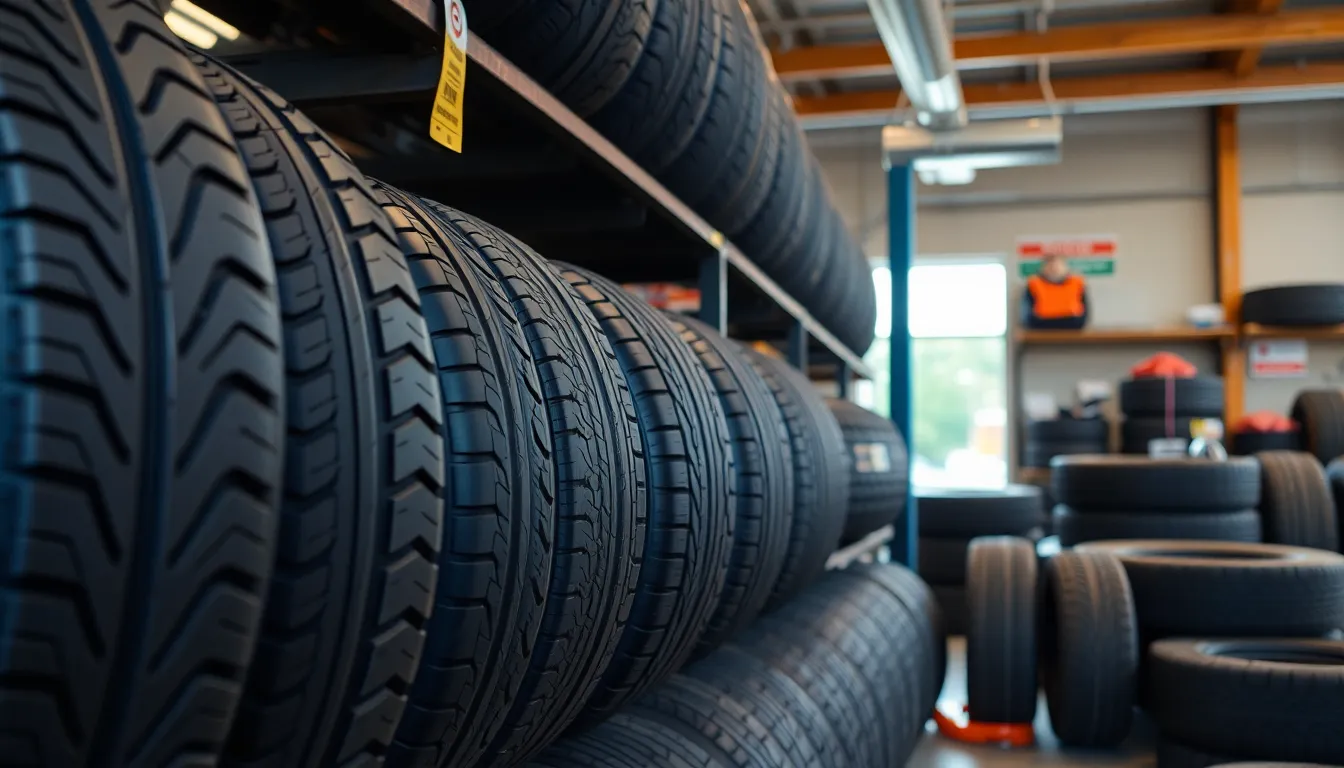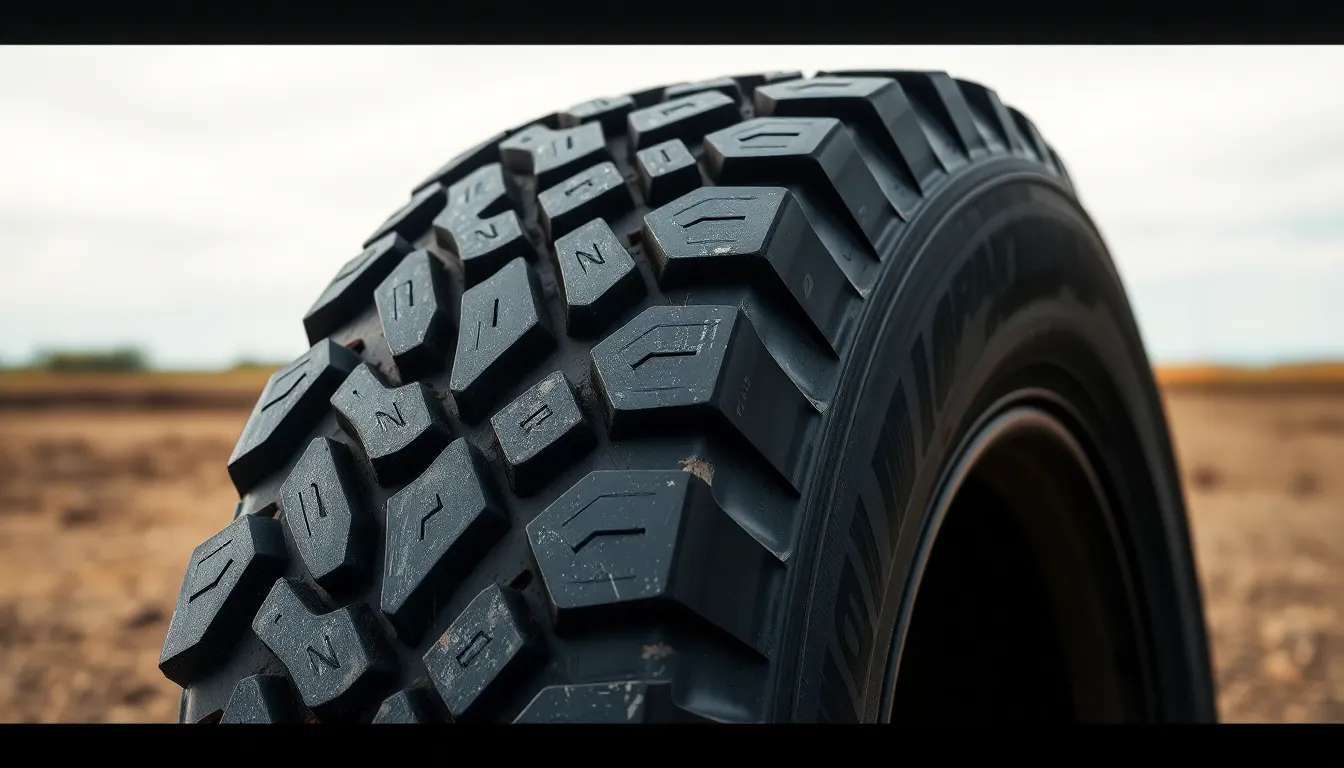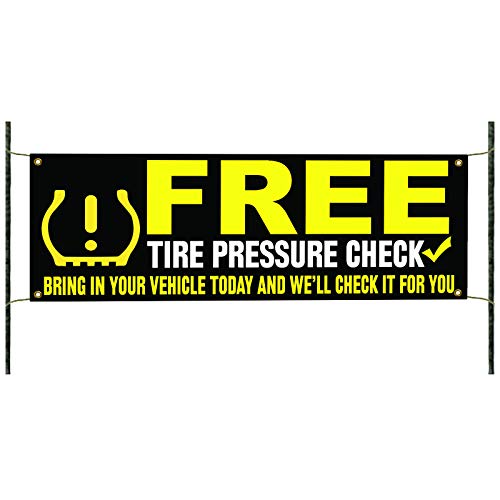When we’re shopping for tires or maintaining our vehicles understanding tire ply becomes crucial for making informed decisions. Tire ply refers to the number of fabric layers that make up a tire’s internal structure and directly impacts durability load capacity and performance characteristics.
We’ve all stood in tire shops feeling overwhelmed by technical specifications wondering what those numbers and letters actually mean for our driving experience. The ply rating isn’t just another confusing detail – it’s essential information that determines whether a tire can handle your vehicle’s weight requirements and intended use.
Learning to identify tire ply ratings empowers us to choose the right tires for our exact needs whether we’re driving a lightweight sedan or hauling heavy loads with a pickup truck. We’ll walk you through simple methods to decode this critical information so you can make confident tire purchasing decisions that enhance both safety and performance.
What Is Tire Ply and Why Does It Matter?
Tire ply represents the fabric layers within a tire’s construction that determine its strength and load carrying capacity. We can identify ply ratings to ensure our tires match our vehicle’s requirements and driving conditions.
Understanding Tire Ply Construction
Tire ply construction consists of multiple fabric layers made from materials like polyester, steel, or nylon. Modern tires typically contain 2 to 4 plies in passenger vehicles, while commercial trucks use tires with 6 to 18 plies. Each ply layer runs from one bead area to the other, creating the tire’s structural foundation.
Radial tire construction places these plies at 90 degrees to the tire’s centerline. Bias ply tires feature layers that cross at diagonal angles, typically between 30 to 40 degrees. The ply rating doesn’t always match the actual number of physical layers since manufacturers use stronger materials that exceed traditional cotton cord strength ratings.
Steel belts sit between the tread and ply layers in most radial tires. These belts provide additional puncture resistance and maintain the tire’s shape during operation. The combination of fabric plies and steel belts creates the tire’s load carrying capacity and determines its durability rating.
Impact on Performance and Safety
Higher ply ratings increase a tire’s load carrying capacity and puncture resistance. Tires with more plies handle heavier loads without excessive flexing or heat buildup. We see improved stability and reduced sidewall flex in heavy duty applications when using higher ply rated tires.
Lower ply tires offer better ride comfort and fuel efficiency for standard passenger vehicles. These tires flex more easily over road imperfections, creating a smoother driving experience. The reduced material also decreases rolling resistance, which improves gas mileage in everyday driving conditions.
Mismatched ply ratings can create safety hazards and uneven wear patterns. Using tires with insufficient ply ratings for heavy loads causes excessive heat generation and potential blowouts. Overloading tires beyond their ply rating capacity leads to premature failure and compromised vehicle control during emergency situations.
Where to Find Tire Ply Information

Locating tire ply information requires checking exact sources that manufacturers use to communicate tire specifications. We can access this critical data through two primary methods that provide accurate ply ratings for our vehicles.
Reading the Tire Sidewall
The tire sidewall contains the most accessible source of ply information through various markings and codes. Load range letters appear on modern tires instead of actual ply numbers, with “C” representing a 6-ply rating equivalent. Tire sidewall markings display the tire size, load index, speed rating, and load range in a standardized format.
Modern tires feature load indexes rather than traditional ply ratings on their sidewalls. These load indexes indicate the tire’s load carrying capacity using numerical values. Physical plies in contemporary tires often number fewer than their equivalent ratings suggest due to stronger materials used in construction.
Tire codes require familiarity to interpret accurately and determine the tire’s true capabilities. The sidewall location for ply information typically appears near the load range designation. Load range and ply ratings function interchangeably in most tire specifications.
Manufacturer Documentation and Specifications
Vehicle owner’s manuals provide recommended tire specifications that include proper ply ratings for our exact vehicles. Manufacturer documentation ensures the tire meets our vehicle’s weight requirements and performance standards. These official sources eliminate guesswork when selecting appropriate tire ply ratings.
Checking manufacturer specifications prevents mismatched tire selections that could compromise safety. Documentation includes detailed tables showing recommended load ranges and corresponding ply ratings. We can reference these materials before purchasing replacement tires to maintain optimal vehicle performance.
Manufacturer websites often contain additional tire specification databases for various vehicle models. Technical service bulletins may provide updated tire recommendations beyond the original owner’s manual information.
How to Identify Different Ply Ratings

Tire manufacturers encode ply rating information using standardized systems that we can easily decode with the right knowledge. Modern tire identification relies on load range letters rather than traditional ply counts.
Decoding Ply Rating Numbers
Load range letters provide the most reliable method for determining tire ply ratings on today’s vehicles. Each letter corresponds to a exact ply equivalent that indicates the tire’s strength capacity.
Load Range Correspondence:
| Load Range Letter | Ply Rating Equivalent |
|---|---|
| A | 2 ply |
| B | 4 ply |
| C | 6 ply |
| D | 8 ply |
| E | 10 ply |
We find these load range letters printed on the tire sidewall alongside other specifications. A tire marked with “E” load rating delivers the same strength as a traditional 10 ply tire even though it contains fewer physical fabric layers. Modern manufacturing techniques use stronger materials that achieve equivalent performance with reduced layer counts.
Commercial and heavy duty applications typically use load ranges D and E for maximum durability. Passenger vehicles commonly feature load ranges A through C depending on their intended use and weight requirements.
Understanding Load Index vs Ply Rating
Load index and ply rating serve different purposes in tire specification systems that we must distinguish for proper tire selection. Load index appears as a numerical value within the tire size description and indicates maximum weight capacity in exact measurements.
Key Differences:
- Load Index: Numerical rating (example: 95 in tire size 225/60R16 95H) that specifies exact weight limits in pounds or kilograms
- Ply Rating: Letter designation (example: E) that indicates tire construction strength and durability characteristics
We locate the load index embedded within the tire size marking where it precedes the speed rating letter. A tire with load index 95 supports up to 1521 pounds per tire at maximum inflation pressure. The ply rating determines how well the tire withstands that load under various driving conditions.
Professional tire selection requires matching both specifications to vehicle requirements. Load index ensures adequate weight support while ply rating confirms structural integrity for exact driving demands like towing or commercial use.
Common Ply Ratings for Different Vehicle Types

Different vehicle categories require exact ply ratings to handle their unique load demands and operating conditions. We’ve organized these ratings by vehicle type to help you identify the appropriate tire specifications for your exact needs.
Passenger Car Tire Ply Ratings
Passenger car tires typically feature ply ratings from 2-ply (Load Range A) up to 4-ply (Load Range B). These tires accommodate standard driving conditions and lighter payload requirements common in daily commuting scenarios.
Most sedans, coupes, and compact vehicles use tires with Load Range B specifications, which provide adequate strength for typical urban and highway driving. Standard passenger vehicles rarely exceed these ply requirements since their primary focus centers on fuel efficiency, ride comfort, and noise reduction rather than heavy load capacity.
Light Truck and SUV Ply Ratings
Light trucks and SUVs commonly require higher ply ratings, typically 6-ply (Load Range C) or 8-ply (Load Range D) configurations. These enhanced ratings support heavier payloads, towing capabilities, and off-road applications that define this vehicle category.
Pickup trucks often use Load Range C tires for moderate hauling tasks, while full-size SUVs and trucks engaged in regular towing operations benefit from Load Range D specifications. Off-road enthusiasts particularly value these higher ply ratings since they provide increased puncture resistance against rocks, debris, and rough terrain encounters.
Commercial and Heavy-Duty Vehicle Ply Ratings
Heavy trucks and commercial vehicles demand tires with ply ratings from 10-ply (Load Range E) to 14-ply (Load Range G). These robust specifications accommodate the substantial weight capacities required for industrial and commercial transportation purposes.
| Load Range | Ply Rating | Typical Applications |
|---|---|---|
| E | 10-ply | Heavy pickup trucks, delivery vans |
| F | 12-ply | Medium commercial trucks |
| G | 14-ply | Heavy commercial vehicles, buses |
Fleet operators and commercial drivers rely on these high ply ratings to ensure tire durability under constant heavy loading conditions. Construction equipment, delivery trucks, and long-haul vehicles particularly benefit from Load Range F and G tires since they withstand the demanding operational requirements of commercial transportation environments.
Signs Your Tire Ply Rating May Be Wrong

Recognizing incorrect ply ratings early prevents dangerous situations and costly repairs. Several indicators can help us identify when our tires don’t match our vehicle’s requirements.
Performance Issues to Watch For
Handling problems often signal the first signs of inadequate ply ratings. Reduced steering responsiveness occurs when tires can’t maintain proper contact with the road surface under load. Increased braking distances become noticeable during sudden stops, as underrated tires compress excessively and lose grip efficiency.
Ride quality deteriorates significantly with improper ply ratings. Lower rated tires create a rougher driving experience because they can’t absorb road impacts effectively while supporting vehicle weight. Overloaded tires with insufficient ply ratings generate excessive heat that leads to premature failure.
Frequent underinflation patterns indicate that our tires can’t maintain proper pressure under load. Excessive tire wear accelerates when ply ratings fall below manufacturer specifications, causing uneven tread patterns and shortened tire life. Visible sidewall bulging appears when tire structure can’t handle the vehicle’s weight demands.
Safety Concerns and Warning Signs
Blowout risks increase dramatically with mismatched ply ratings. Loss of vehicle control becomes likely when tires fail under stress, particularly during highway speeds or heavy loading conditions. Accidents occur more frequently when drivers can’t maintain proper vehicle stability.
Uneven tread wear patterns reveal structural inadequacies in our tire selection. Sidewall cracks develop when rubber compounds stretch beyond their design limits due to insufficient support layers. Persistent low tire pressure indicates that our tires can’t maintain structural integrity under normal operating conditions.
Excessive sidewall flexing creates heat buildup that weakens tire components over time. Tread layer separation occurs when internal stress exceeds the tire’s construction capabilities, leading to catastrophic failure. Puncture vulnerability increases as weaker tire structures can’t resist road hazards effectively.
We must check our tire sidewall markings immediately when these symptoms appear. Consulting our owner’s manual confirms the correct load range specifications for our exact vehicle model. Ensuring our tires meet or exceed manufacturer specifications protects us from dangerous driving situations.
Conclusion
Understanding tire ply ratings empowers us to make safer and more informed decisions about our vehicle’s most critical safety component. We’ve explored how these ratings directly impact load capacity durability and overall performance while learning to decode the standardized marking systems that manufacturers use.
Armed with this knowledge we can confidently navigate tire shopping by matching our vehicle’s exact requirements with the appropriate ply ratings. Whether we’re driving a compact car or operating heavy commercial equipment selecting the right tire construction ensures optimal safety and performance.
Remember that incorrect ply ratings can lead to dangerous situations and expensive repairs. By checking our tire sidewalls and consulting manufacturer specifications we’re taking proactive steps to protect ourselves and extend our tire investment.
Frequently Asked Questions
What is tire ply and why does it matter?
Tire ply refers to the number of fabric layers in a tire’s construction that determine its strength and load-carrying capacity. It matters because it affects your tire’s durability, performance, and ability to safely support your vehicle’s weight. Understanding ply ratings helps you choose the right tires for your specific driving needs and ensures optimal safety and performance.
How many plies do modern passenger car tires have?
Modern passenger car tires typically contain 2 to 4 plies, while commercial truck tires can have 6 to 18 plies. However, due to advanced materials and manufacturing techniques, the actual number of fabric layers may be fewer than the ply rating indicates, as stronger materials can provide equivalent strength with fewer layers.
Where can I find my tire’s ply rating information?
You can find tire ply information in two primary locations: on the tire sidewall and in manufacturer documentation. The sidewall contains markings and codes indicating load range and ply ratings. Additionally, your vehicle’s owner’s manual and manufacturer specifications provide reliable information about the appropriate ply ratings for your specific vehicle.
What’s the difference between load index and ply rating?
Load index is a numerical value indicating the maximum weight capacity a tire can support, while ply rating is a letter designation (like Load Range C or D) that reflects the tire’s construction strength. Both specifications must match your vehicle’s requirements to ensure adequate weight support and structural integrity for safe driving.
What are the common ply ratings for different vehicle types?
Passenger cars typically use 2-ply (Load Range A) to 4-ply (Load Range B) tires. Light trucks and SUVs generally require 6-ply (Load Range C) or 8-ply (Load Range D) tires. Commercial and heavy-duty vehicles need more robust options, ranging from 10-ply (Load Range E) to 14-ply (Load Range G) for substantial weight capacities.
What happens if I use the wrong ply rating?
Using incorrect ply ratings can lead to dangerous situations including handling problems, increased braking distances, poor ride quality, tire blowouts, loss of vehicle control, and uneven tread wear. Always ensure your tires meet or exceed manufacturer specifications to avoid these safety hazards and costly repairs.
How do I know if my current tires have the correct ply rating?
Check your tire sidewall markings and compare them with your vehicle’s owner’s manual specifications. Look for performance issues like handling problems, excessive heat generation, or uneven wear patterns that may indicate incorrect ply ratings. When in doubt, consult a tire professional to verify your tires meet manufacturer requirements.





